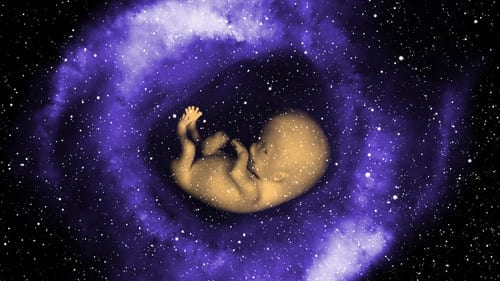According to the Kabbalah – the Jewish mystical tradition – all matter in the universe merely serves as an outer shell for an inner spiritual essence. This spiritual substance, or “soul,” is what holds together the different particles of matter and makes physical existence possible.
In other words, not only do living things have souls (including animals), but so do plants and inanimate objects as well. The differences between them lie only in the level of soul, and its potential for movement and expression. The soul of fauna has the power of agglomeration – to hold the particles of matter together – and of growth and volitional movement. Because of these properties, the material body housing the soul can develop and move from place to place.
The soul in flora also has the power of agglomeration and growth, whereas the inanimate soul can do nothing more than unite its various parts and maintain its own unchanging existence.
The great Kabbalist, Rabbi Chayim Vital, stated the following:
“The soul of inanimate objects, such as metals, stones, etc… is called the nefesh (the animating soul), which connects [the pieces], and allows them to exist without modification of their original form, because this soul has but one power.”
The Sages of Kabbalah teach us another important point. As opposed to casual observation, which can lead us to think that the universe exists as an independent entity, they state that at every moment, each detail of the creation receives a spiritual energy from the God that creates and maintains it (“energy” being used here in scientific terms – to describe an activating force). This force makes the reality of creation possible. This can be compared to a mechanism that requires a constant flow of electricity to maintain its operation. If the spiritual bounty at the root of creation were to cease, the reality of the universe itself would be nullified, to utterly disappear.
This concept is expressed in one of the blessings made in the traditional Jewish prayer service:
“…in His goodness, He renews daily, perpetually, the work of creation.”
Since the creation is already in existence, why does this blessing speak of its perpetual renewal? The answer is that the creation continually receives a spiritual outflow that maintains it. Without this constantly replenished energy from the Creator, the reality of the world would be extinguished.
The Supernal Outflow that Gives and Maintains Life
Rabbi Chayim of Volozhin (1749-1821) wrote as follows about the continual existence of the creation:
“…God's ways are not like man’s. For example; when a person builds a house out of wood, he does not create or invent [the wood] by himself… he takes ready-made trees and shapes them into a house. After he has arranged them as he planned, the house remains standing, even without his support. However, just as God originally created the world ex nihilo, using His infinite power… so too, since that very beginning, the order and existence [of creation] depends solely on His continuous, willful input, which bestows it with new light (“energy”) and strength, each moment of every day. If God were to withdraw that energy and influence for even a single instant, the world would immediately plunge into chaos and nothingness. The Men of the Great Assembly, in formulating the daily prayers, put it this way: “…in His goodness, He renews daily, perpetually, the work of creation”. That is, always, at every moment, as it is said: “To Him that makes the great lights, for His mercy endures forever” (Psalms 136:7). The text states “who makes” and not “who made.” (Nefesh HaChayim, Gate 1, Chapter 2).
From the above Kabbalistic teachings, we can derive the following conclusions:
1. Even inanimate objects have some form of soul.
2. One of the functions of the soul is to connect and unite, particles although we have yet to understand exactly what is connected by the soul in a shard of metal shard or a pebble.
3. There is a constant energy emanating from God that maintains the universe’s existence.
By looking at some of the revolutionary discoveries made in physics in recent generations, we can find good examples of how to understand these statements of the Torah, whose author is the Creator of physical reality itself.
One of the most important and well-known discoveries in the last one hundred years is the fact that all matter is comprised of atoms, from the ancient Greek word for “indivisible.” That is, the atom is the most indivisible part of an object (though science has succeeded in dividing the atom as well).
Every atom is composed of a nucleus, which contains neutrons and protons. The first lacks any electrical charge, while the latter contain positive electrical charges. Electrons, which are negatively charged, orbit the nucleus at very high speeds, creating the atom’s familiar appearance. (In much the same way that a rapidly spinning fan appears to be a single, solid surface, so the electrons, which circle the atomic nucleus billions of times within a millionth of a second, do not appear as individual objects, but give the atom the appearance of a closed, impenetrable ball.) The fact that every substance, whether stone, metal or anything else, is comprised of innumerable, densely packed atoms, is what gives it its sense of solidity.
Another important piece of information: The quantity of matter in an atom (which includes the protons, neutrons and electrons) is so small that the relative distance between the nucleus and the electrons is comparable to the distance between the Earth and the Sun.
This means that all the matter in the universe is composed primarily of empty space. As we explained earlier, it is only the endless movement of electrons at very high speeds that creates the impression of solid reality, when in actuality; the matter that we see is nothing more than an optical illusion.
The conclusion we can draw is that if for some reason, the mysterious energy that drives the electrons round in their orbit were to cease, the universe as a whole would vanish, because each atom is comprised mostly of empty space. The material component in an atom is so small that it cannot be seen or touched. It is only the immense speed of the electrons’ orbits and the denseness of the myriad atoms pressed together that allows us to perceive objects as being solid.
Two conclusions can be drawn from the above:
· Only the Creator of the universe, who knows the mysteries of His creation down to the finest detail of the nature of matter, could have revealed this incredible information in the Torah, which He gave to the Jewish people over 3,000 years ago.
· The ancient Sages possessed a deep and inexplicable wisdom. Indeed, how would we have related to their comments on the true nature of reality before these recent scientific discoveries substantiated their words?





